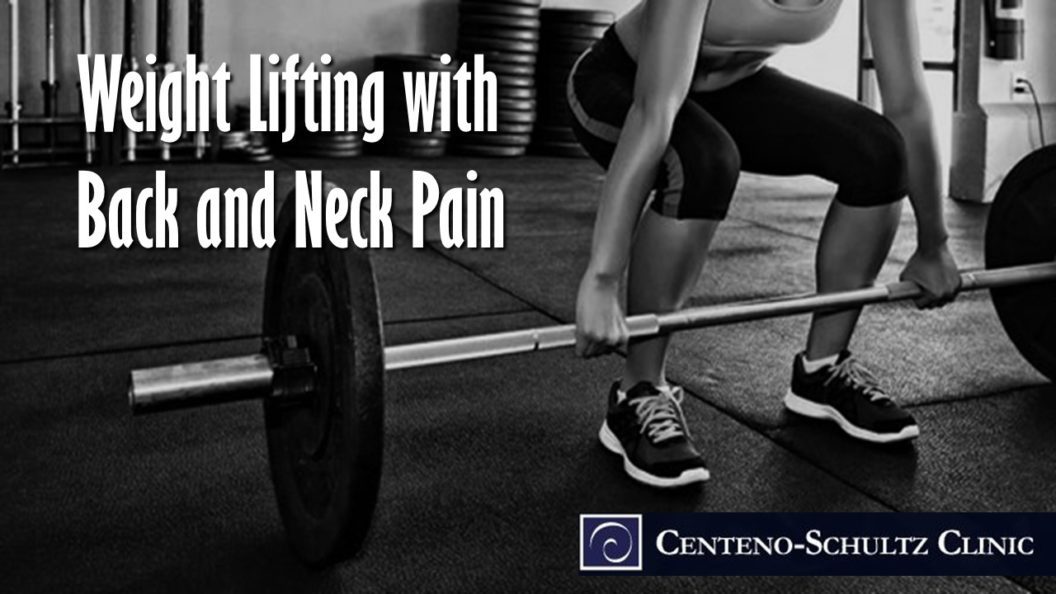Patients with back or neck pain often want to know if they can still work out and lift weights, and if so, how can they work out without doing further damage. You’ll be happy to know, lifting weights with back or neck pain is possible with some modifications, which we’re going to provide in just a moment.
Before we do that, you need to know a couple of things. First, before doing any exercises with back and neck pain, be sure to consult with your healthcare provider to make sure exercise is appropriate for your particular condition. Second, if your workout is causing abnormal pain at any point, don’t embrace the pain; it’s a signal you need to heed its warning and back off.
Note that muscle soreness due to repetitions and weight resistance is normal, expected pain or tension; however, if the workout is stressing a known condition and creating more pain, take a break or move on to a different exercise.
The 7 Things You Need to Know Before Lifting Weights with Back or Neck Pain
1. No-No Exercises
On our list of no-no exercises for back and neck pain is dead lifts, squats with weights, flexion exercises with weight, rotation exercises with weight, and Olympic lifts. These exercises performed with heavy weights can damage back discs, especially if the back is already in pain. Squats with no weight or light weight (no more than 20 pounds) should be fine as long as they aren’t irritating back or neck pain.
2. Stretching Is Critical
Your high-school gym teacher really was right: stretching is critical. For back and neck pain, make sure you focus on stretches that open up the chest and hips and get the head back, such as Dr. Centeno’s “Old Man Stretch” seen here.
3. Focus on Your Core
One core exercise should be completed for every other type of exercise (such as legs or arms) completed. Core exercises include, chops with a pulley, bridging, hip abductor and adductor exercises, ab exercises, chest rotation, and so on. One great modification to chest presses on a bench is to decrease the weight and perform the chest press resting your back on a Swiss ball rather than a bench.
4. Train into Symmetry
Everyone has a side that’s weaker than the other and/or areas that are weaker than others. You should cater your exercise to the weaker side or area. If, for example, you can row 80 pounds on your right but you can only row 40 pounds on your left, you’re not doing yourself any favors, and will likely increase back or neck pain or cause more damage, by trying to row 80 on both sides. You first have to focus on increasing weight on the left-side until you reach that 80-pound balance.
5. Train into a Normal Posture
If the weight is so heavy, it forces you into an abnormal posture—forward head, collapsed chest, curved back, strained under gravity, etc.—lower the weight. Working out in front of a mirror will help you stay keyed in to your posture at all times. If your posture is affected and you don’t lower your weights, you’re risking more back and neck pain and potentially damage. The goal should be to gradually increase your weight with training while maintaining proper posture.
6. Lower Your Weights Until the Core is Normally Active
Your core muscles will sometimes become overloaded when you lift heavy weight. A sign of this is when your core tightens up. Backing off, readjusting, and lowering the weight should help and lower your back and neck risks.
7. Use Treatment to Facilitate Your Workout
Other than that normal muscle soreness discussed earlier, your workout shouldn’t be a painful experience. If a muscle acts up or goes into spasm, you should stop and treat the muscle. For example, use a foam roller to loosen up a rib muscle that’s tightened up or having spasms. Don’t keep pushing through and working out that muscle to save time as this risks injury to the muscle.
Focusing on these 7 things provides a good foundation for lifting weights with back or neck pain. The most important thing you need to know in any exercise program is to listen to your body. If it doesn’t feel right, it’s probably not, so don’t risk injury by pushing through. If the pain continues, determining the cause of your back or neck pain would be important so that non-surgical regenerative interventional orthopedic treatment for back or neck pain can allow you to continue working out.

